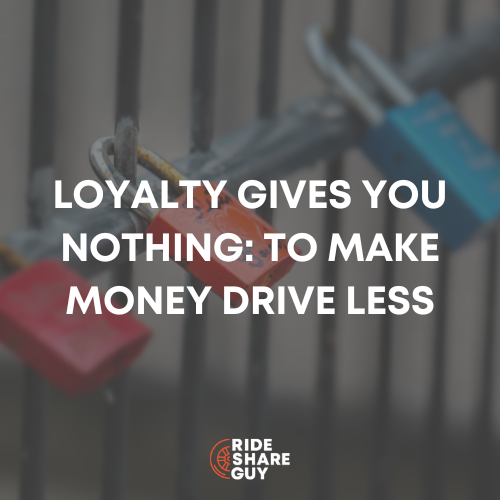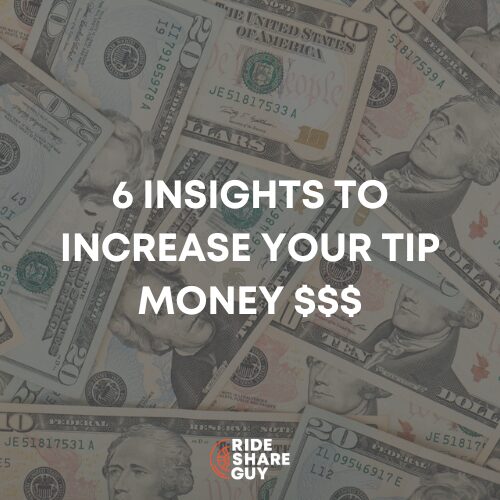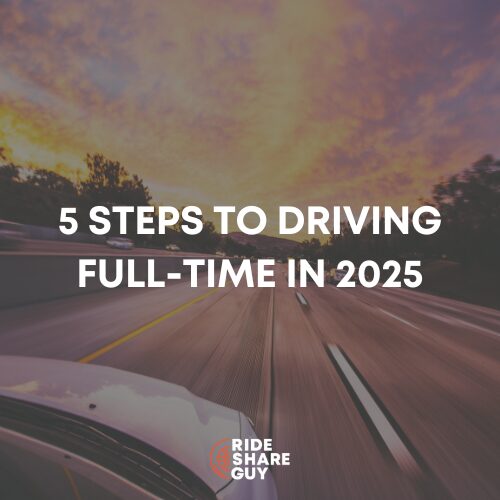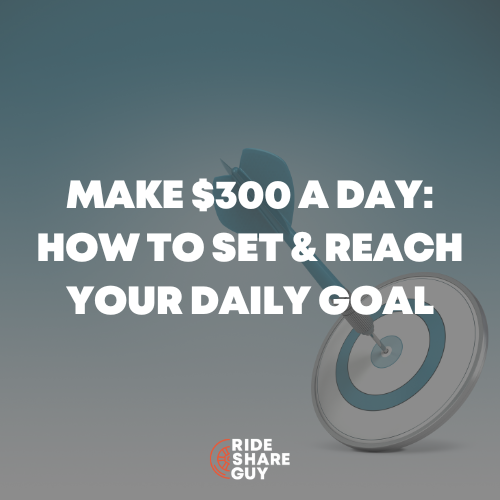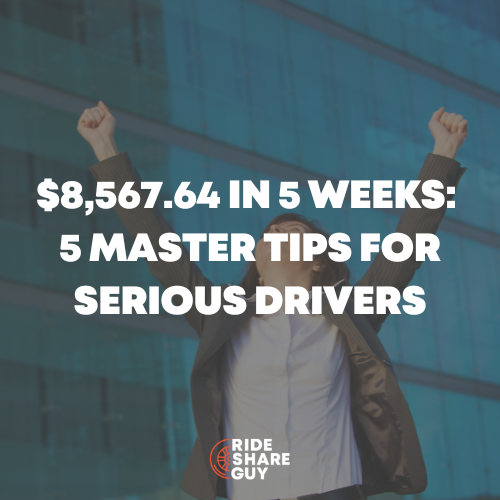Driving for Uber and Lyft is a great way to earn money on the side, but can you drive for Uber and Lyft simultaneously?
It would make sense since neither app is predictable and can have considerable downtime, so why not try it and maximize your earnings?
Before jumping in headfirst, here are some factors to consider.
Can You Drive for Uber and Lyft at the Same Time?
Because Uber and Lyft drivers are independent contractors, you can drive for both companies without worrying about conflicts of interest.
Neither company prevents you from driving for the other.
However, it’s essential to understand the differences between the two companies, the logistics of driving for both companies, and the pros and cons of diversifying your gig efforts.
Is It Better To Drive for Uber, Lyft, or Both?
There isn’t a one-size-fits-all answer to whether it’s better to drive for Uber or Lyft.
One example you can use to compare is that Uber has a much larger market share (71%) than Lyft (29%).
Determining which is better depends on which app is most active in your area and the level of competition. Diversifying and using both apps can help you increase your earnings.
Reasons To Drive for Both Uber & Lyft
You might think it’s too overwhelming to drive for Uber and Lyft, especially during busy times. How do you decide which is best?
While it might add a little more work and decision-making to your plate, there are plenty of reasons to drive for both apps.
There’s power in numbers, so the more chances you have to pick up rides, the more money you’ll make. Since nobody has a crystal ball to tell which app will perform best, you increase your chances of higher income using both apps.
Speaking of earnings, when you use both Uber and Lyft, you increase your hourly rate by minimizing downtime.
For example, if you take an Uber ride 20 minutes away from where you started, you’d have 20 minutes of downtime returning to your spot. The downtime decreases your hourly rate.
But, if you could pick up a Lyft ride going the same direction back to your home base, you would make money while returning, increasing your hourly rate. This limits your downtime, reduces the risk of boredom, and reduces fuel waste by driving around waiting for another rider.
The Differences Between Driving for Uber and Lyft
Driving for Uber and Lyft is similar since both are rideshare apps that hire independent contractors to accept rides when available.
However, there are some differences to consider when deciding which is right for you.
I already discussed the percentage of market share, but there are a few other differences to consider (especially the vehicle requirements).
Different Vehicle Requirements
Each city and company has different vehicle requirements. Uber generally requires cars to be 15 years old or newer, but Lyft has stricter requirements, requiring newer cars in some cities. Lyft also allows subcompact cars and has a rental program drivers can use if they don’t own a car.
Different Age Requirements
The other most significant difference is the age requirement. Uber and Lyft allow drivers at least 21 years old to drive for them.
However, Uber takes it a step further, requiring drivers under age 23 to have at least three years of driving experience before getting started.
Some drivers also say that Lyft offers more promotions or ways to make additional money than Uber does, which could be due to Lyft’s much smaller market share than Uber.
Logistics of Driving for Both Uber and Lyft
Driving for Uber and Lyft requires organization and preparation. Combining efforts between apps only increases your income if you know how to handle both apps and maximize your opportunity.
Before Starting the Apps
Before downloading both apps, consider your setup, including the following.
- Phone: If you have an older phone, it may not withstand running the Lyft and Uber apps simultaneously, as they both drain batteries significantly. So determine your phone’s capabilities and if you should upgrade before trying to run both apps.
- Accessories: Even with a newer phone, you should plan to have it plugged into your car’s adapter while running both apps. A dead battery means no income because you need the apps running to see available trips and complete them. Having a phone mount in your car is also a good idea to help you keep your eyes on the road rather than handling your phone.
- Data Plan: Because both apps run non-stop while you’re active, you will need an unlimited data plan or may be unpleasantly surprised at your phone bill. Overages can really add up fast. Spending more on your data plan to have unlimited data or something similar will help you keep more of your earnings.
Switching Between the Uber and Lyft Apps
With the right tools in your car, you’re ready to download the Uber and Lyft apps and start making money.
Because both apps take up a lot of memory and battery, close any other open apps. If you aren’t sure if anything is running in the background, restart your phone for the best chance of running both apps seamlessly.
Once both apps are open, keep the Uber partner app open on your screen and let the Lyft app run in the background. This is important because Uber won’t keep you active if the app isn’t running on your screen, but Lyft will.
After accepting a ride from either app, immediately log out of the other app. If you don’t do this and a request for the other app comes through, you must decline it, which can hurt your acceptance rate and future income.
Using Third-Party Apps
There is one third-party app that makes working with Uber and Lyft seamless. The Mystro app automatically switches between Lyft and Uber apps for you. If you accept a ride in one app, Mystro will automatically log you out of the other.
Mystro also allows you to set up filters to eliminate requests for certain types of rides, including those from riders with bad ratings, rides within a certain distance, or other types of rides you don’t want to handle.
Mystro is currently available in the Apple app store and as a trial for Android phones, which you can request by entering your phone number on their main website.
Advantages of Driving for Uber and Lyft at the Same Time
So why would you want to drive for Uber and Lyft at the same time? It seems confusing, and if you don’t use the third-party app, it can be detrimental to your ratings if you forget to log out of the other app.
But there are many benefits, including the following.
- Increased Earning Potential: When both apps are open, you increase your chances of snagging a ride rather than relying on only one platform. Sometimes one platform is busier than the other, but there’s no way to know unless you’re active on both apps.
- Access To a Larger Customer Base: Some riders prefer Uber over Lyft or vice versa. When you drive for both apps, you can tap into the larger customer base, no matter which platform they prefer. You will receive good tips if you provide excellent customer service, regardless of which app you drive for. This is because both apps allow drivers to keep 100% of the tips that they receive.
- Reduced Downtime: With two apps, you have a higher chance of having less downtime. Your per-hour rate decreases when you’re active on apps but not driving. Using both apps increases your chances of picking up a ride on your way back or even halfway back, increasing your earnings.
- Improve Your Rideshare Skills: Your rideshare earnings rely on your customer service. Riders must pay the Uber or Lyft fares but aren’t obligated to tip. With more practice, you’ll learn what riders want for a perfect ride, increasing your chances of making more money.
Disadvantages of Driving for Lyft and Uber at the Same Time
Like any side hustle, there are downsides to driving for Lyft and Uber at the same time, including the following.
- Increased Workload: When you work with Uber and Lyft, you’ll have more rides, which is great if you want to make money. But for some, it can get overwhelming. Whether you’re just starting your rideshare gig or you signed up for it just to give yourself something to do, it can be easy to get overwhelmed by the number of rides available.
- Lack of Consistency Between Platforms: No one can predict which app will be busier on any given day. One day you might find Uber provides you with the most income, and the next, Lyft. It’s hard to come up with any rhyme or reason.
- High Cancellation Rates: When you use both apps simultaneously, you must log out of the second app after accepting a ride in the first. If you don’t and must cancel rides often, it could cause Uber or Lyft to deactivate your account.
- Low Acceptance Rates: Just like high cancellation rates aren’t good for your driver rating, neither are low acceptance rates. Uber and Lyft want active drivers that will accept rides when they are on the app. You risk losing your driving privileges with either app if your acceptance rate is too low.
Tips for Managing Driving for Both Uber and Lyft
If you decide driving for Uber and Lyft is a good idea, here are some tips to make it work to your advantage.
Plan Your Schedule
When working for Uber and Lyft, having a schedule is important. Get a feel for which areas and days are the busiest so you can plan your schedule accordingly. You’re likely better off working a few hours during busy times than wasting eight hours during slow times.
Utilize Rideshare Management Tools
When working with two apps, switching between them or keeping track of what you’re doing can be difficult. The Mystro app mentioned earlier can make your life a bit easier while allowing you to safeguard your rating and maximize your earnings while driving.
Optimize Your Driving Strategy
Your driving strategy may change daily, depending on what’s happening. For example, if one Friday night Uber is really busy, it’s best to close Lyft and focus only on Uber. Confusing yourself and risking acceptance rates isn’t a good idea.
Also, consider choosing the closest pickups rather than waiting for longer, better-paying rides. There’s no compensation for downtime, so anything you can fill your downtime with is better than nothing.
Use Two Phones
If you can manage two phones, it can eliminate the headache of switching apps. But be careful since you shouldn’t hold a phone while driving. You could put your safety at risk or run into legal trouble if you’re caught holding a phone.
Plus, the extra cost of owning a second phone will decrease your earnings, so only do this if it makes sense.
Track Your Earnings and Expenses Separately
Keeping careful track of your earnings will help you understand which app performs better, but you must account for expenses too.
Find a clear and accurate way to track income and expenses, and then you’ll have a picture of which app works better for you or if using Uber and Lyft makes sense in general.
Watch Out for Surges or Prime Time
Uber and Lyft may have different surges or prime times, and it always makes sense to take advantage of those first. If there is surge pricing or promotions in one app, consider only using that app for the duration to maximize earnings.
Maximize Your Earnings Between the Platforms
Create a strategy to make the most out of both platforms. Focusing on the app with surge pricing is a start, but also determine other ways to maximize earnings within each app to make the most money.
For example, if you know you get the most Uber rides driving one direction, but Lyft is popular coming back, you know which apps to prioritize to make the most of your earnings.
FAQs
Driving for Uber and Lyft is possible, but it requires a lot of organization. Here are some common questions people have for me.
Are There Legal Conflicts With Using the Uber and Lyft Apps at the Same Time?
As long as you follow Uber and Lyft’s agreements and terms they set in place with drivers, you aren’t at risk of any legal conflict. Neither app states you cannot drive for the other, but both expect drivers to provide the highest level of customer service, including a high acceptance rate to keep you active.
So while there may not be legal conflict, you may not operate to your fullest capacity, resulting in deactivation.
Can I Switch Between Uber and Lyft While Driving?
It’s never a good idea to switch apps while driving. If you use the Mystro app, it will do it for you. If not, always pull over to safety before checking the apps while on the road.
Can I Use the Same Vehicle for Both Uber and Lyft?
Yes, you can use the same vehicle for both Uber and Lyft as long as it meets the requirements. Uber and Lyft generally have the same vehicle requirements, but some differences may exist, especially in certain cities.
Do I Need Separate Insurance for Driving for Both Uber and Lyft?
The insurance you need to drive for Uber and Lyft will be the same for both platforms. There isn’t specific insurance for each app. Talk to your insurance provider to see what you need to use your car as a rideshare service. Some include it in your coverage, and others require a separate policy.
How Do I Decide Which Trip To Take?
Take the trip that pays the most but also eliminates any downtime. For example, if you know both apps are slow, take any trip that comes your way, even short trips. But if one app is busier than the other, take the higher-paying fare to maximize your earnings, and maybe you’ll get lucky enough to catch a ride on your way back.
Should You Drive for Uber and Lyft?
It’s possible to drive for Uber and Lyft simultaneously, but you must be organized and capable of managing both apps.
Knowing which app to prioritize during busy times, remembering to turn off the other app after accepting a ride on an app, and learning how to pick up rides on your way back is the key to making the most of driving for both apps.
